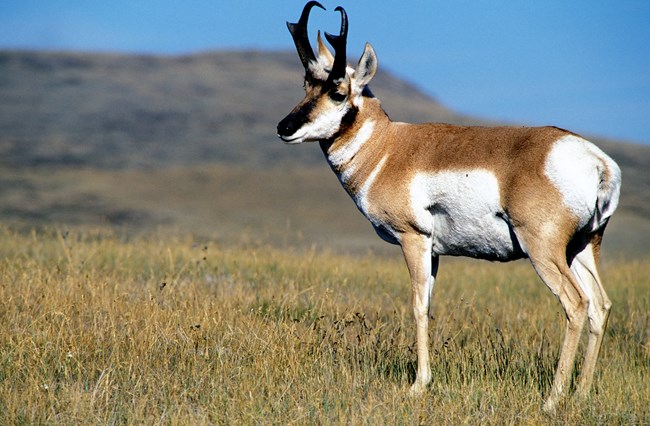Last updated: April 2, 2021
Article
Pronghorn

Photo: USFWS
Sergeant Ordway wrote, “…it was 3 feet high resembles a Deer in some parts. the legs like a Deer. feet like a Goat. horns like a Goat only forked Turn back picked hair thick & of a white a dark redish coullour. Such an anamil was never yet known in U. S. States.” The men struggled with a name for this new-to-them mammal. First they tried cabre, the Spanish word for goat, spelling it cabra, cabree, and cabrie. Captain Lewis, impressed by the animal’s graceful fleetness, settled on “antelope.”
We know it as the pronghorn (Antilocapra americana), the only surviving member of the Antilosapridae family, that has been in North America for millions of years.
With a deer-like body, pronghorns weigh between 90 and 120 pounds and stand about 3.5 feet tall from feet to top of the shoulder. They’re the only known animal to have branching hollow horns that are shed every year. And they’re the fastest running animal in North America – clocked at close to 50 miles per hour.
